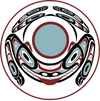Introduction: The Giant Tlingit Devilfish Carved Mask by Fred Fulmer Native Artist
I am a member of the Tlingit tribe through my mother's side. More specifically, I am member of the Chookaneidee Clan- Iceberg house. The Tlingit Chookaneidee's ancestral homeland is Glacierbay Alaska. All the different Clans among the Tlingit have stories that are owned by their clan, called At.oow. The Chookaneidee have stories of events that happened to their clan in their history. These stories and events are what help define us as a Native people.
I’m a Tlingit-style woodcarver following my late great-grandfather Frank St. Clair Sr's footsteps. When my wife Ivy and I moved back to Washington State and moved to Snohomish County, I acquired a 16ft totem pole blank and three 4ft butt ends of totem pole logs to make giant masks. After carving a 16-foot totem pole (The Ancient Ones), I decided to start carving one of those large blanks.
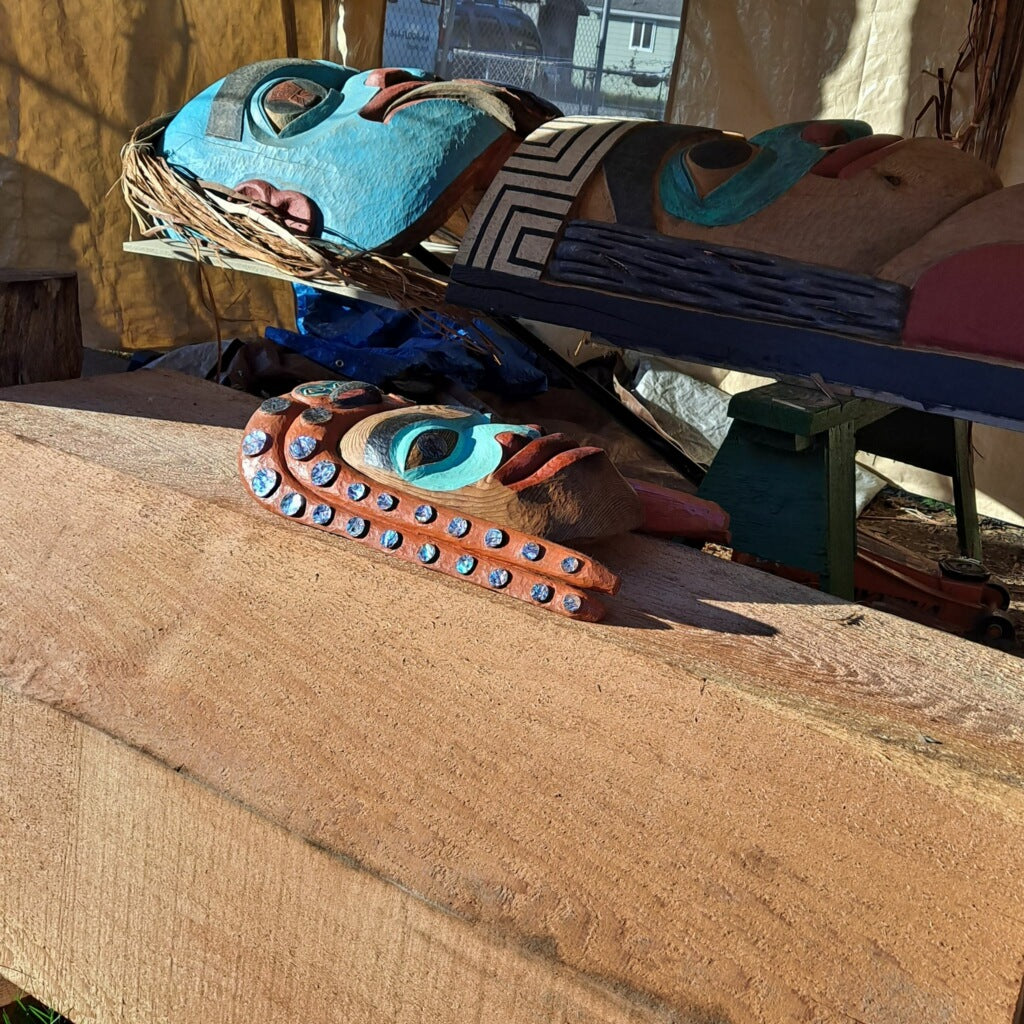
A few years ago, I carved a 17-inch-tall Octopus mask to represent the Chookaneidee Clan, my mother, and my siblings. It turned out pretty good if I say so myself. I used it as a prototype for my larger version. The nice thing about the larger blank in comparison to the smaller prototype is that overall, the larger blank had more wood to work with. This means that I had room for all eight tentacles, in the prototype I could only put 4. I also had more depth to have a more defined face.
The dimensions of the cedar block are 48” tall, 33” wide, and 19” depth. Now I needed to lay the blank onto blocks and level it out, then establish the center line. The thing about working with cedar is that they don’t grow symmetrical.
Time to balance the blank from side to side using the center line. On this blank one side had a lot more wood, so I needed to remove more wood on that side to balance the blank. Through a process called faceting, I was able to get the blank balanced and now the fun begins! The cedar wood is ready to have the Devilfish/Octopus design transferred onto it.
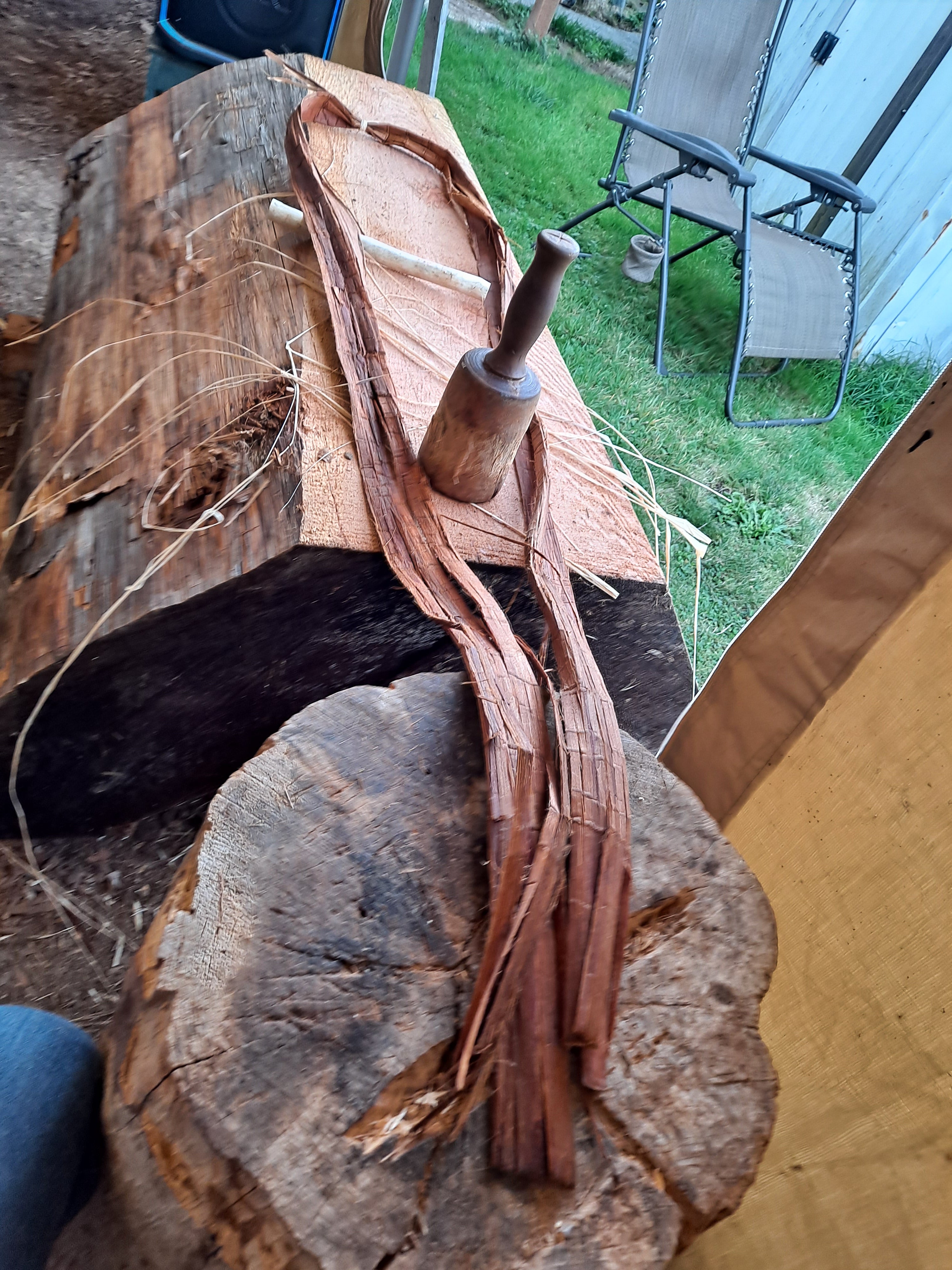
As I was drawing the design, I could see that I had more options than I did with the prototype. I decided to go with a different style of Devilfish/Octopus face for one. The prototype tentacles came down the sides of the face and maintained a straight line like a person's hair would do. I was planning on doing this on the larger mask as well. The thing about options is that they are subject to change. I explain it this way, “My carvings evolve through dreams, visions, and inspiration throughout the process”.
I was talking with my wife Ivy about how the mask is coming along. At this point, I had the Tlingit face already getting established and Ivy had an idea about the tentacles. She thought it would look awesome if the tentacles weaved in and out crossing over themselves as they lay along the side of the face! I thought that was a great idea as well, but I wasn’t able to make that happen on this piece because establishing the human (Tlinjgit Kaa) face took up a lot of space. There wasn’t enough to weave the tentacles. So keeping the tentacles straight seemed like the best option at this point, knowing in the back of my mind its more than likely to change. I told Ivy that I had to carve the Octopus tentacles down to the ear area anyway before deciding.
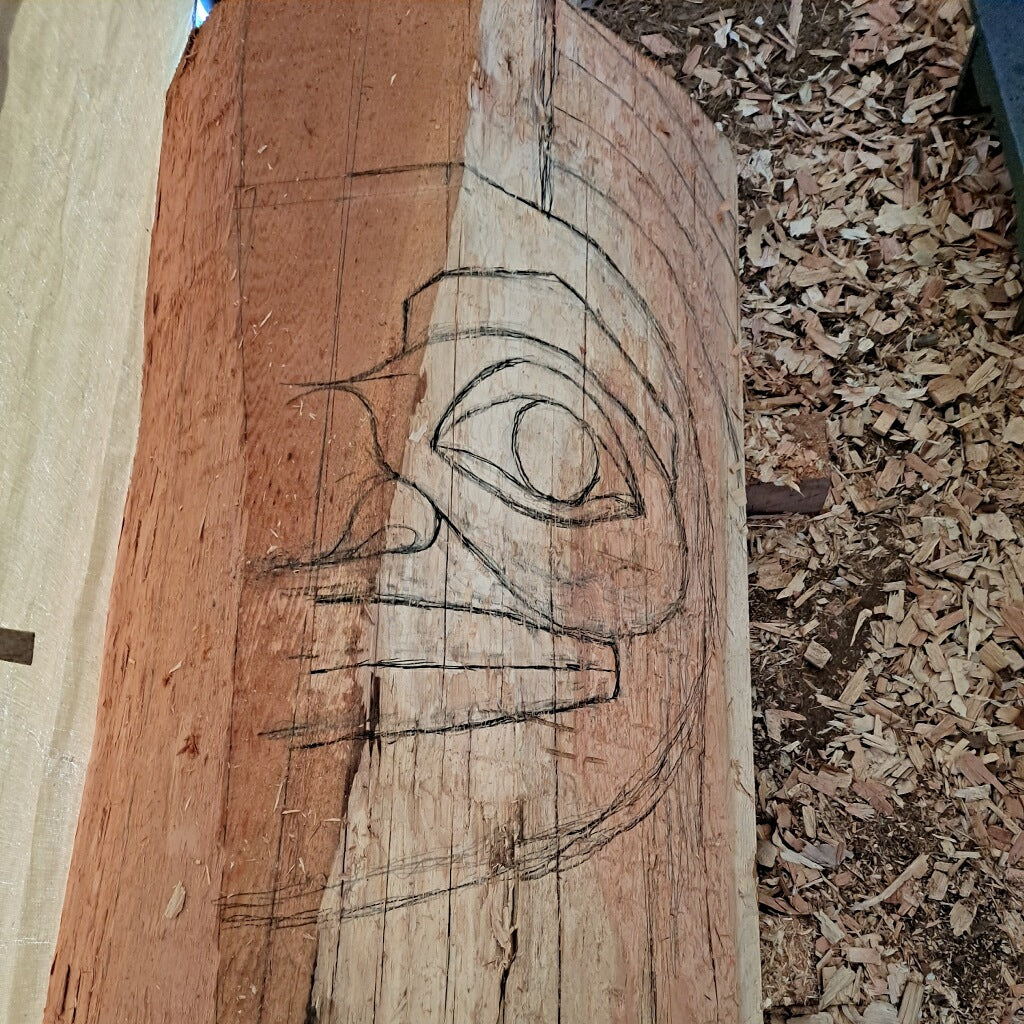
Carving is a process that takes time to evolve, which allows time to think about the options as I carve my way to those critical areas. With that being said, I did look at the tentacles and how they could look along the way, keeping in mind Ivy’s suggestion of weaving them in and out.
When I reached the point where I needed to decide how they’d look, I had already been thinking of having the Octopus tentacles swirling in a circle somehow. So I started doodling. Drawing the tentacles and having them swirl in opposing directions L-R-L-R on one side, and R-L-R-L on the other as the available space opened up below the Tlingit Kaa’s chin area. This seemed to be the best option.
Before I decided on swirling the tentacles, I should mention that I was looking at keeping the tentacles straight. That meant that there was a lot of wood that was going to have to be removed below the chin (approximately 11x18 inches), leaving the straight hair/tentacles on the sides. That’s a lot of real estate (wood) to remove I remember thinking. I had my battery chain saw out and was half a heartbeat away from doing it. I decided not to because when you do that, it means you made a commitment and removed the options. Now if I did remove all that wood and went with the straight hair/tentacles it would have looked good… but instead I went with the swirls, and in the end I am glad I did!! This is the best part of being in what I call the creative zone!! Don’t you agree?
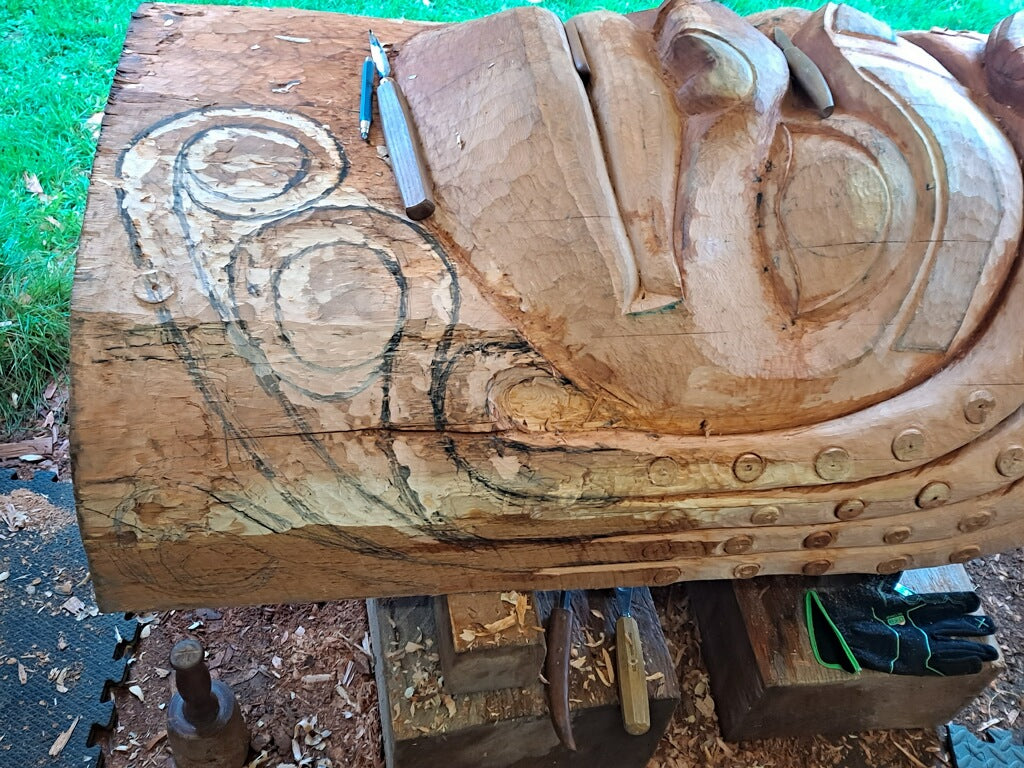
This is an example of the way I create. I don’t have a final drawing of how this giant mask is going to turn out… it evolves! I love the process for sure!
I got the tentacles swirling or circling back where the tips touched the tentacles, which created these circles of wood. This meant 6 out of 8 tentacles had these circles. This area is what I refer to as negative space, again I have a decision to make.
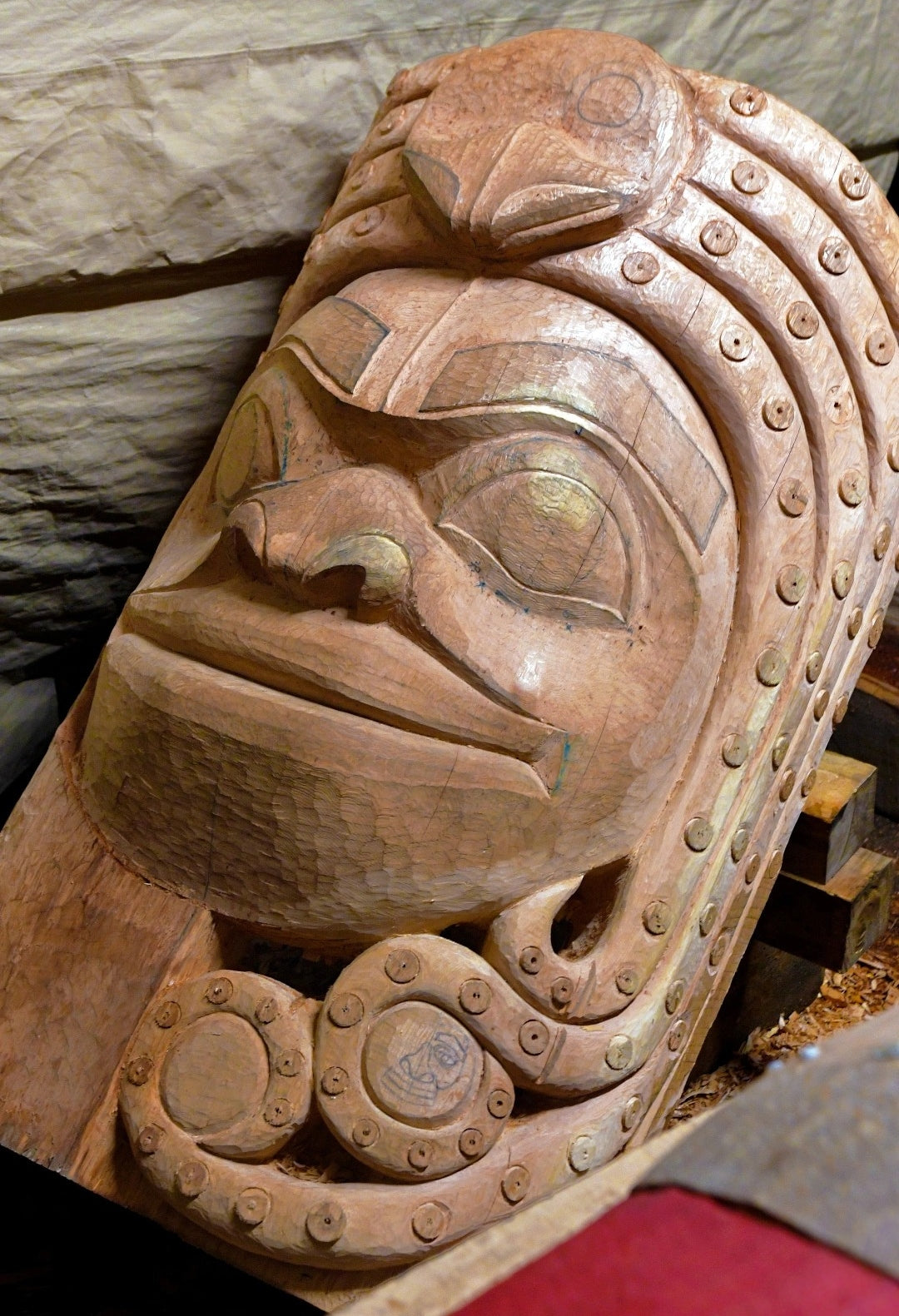
Note: I know this blog is about “How the Chookaneidee Clan earned the rights to use the Devilfish/Octopus as one of their Clan symbols”, I definitely will get to that, right now I’m sharing the carving-creating process which spanned the space of 6 months to complete.
Back to the negative space created by swirling the tentacle tip back towards and touching itself. The negative space is created by removing the wood in that space. Now I need to make a managerial decision as I call it. If I remove the wood, that would look like all the tentacles are hanging independently. That would look awesome!! It would also be me committing to that look as well.

Remember when I mentioned that the thing about carving is the process of doing it takes time? I tell people who want to come over and watch me carve. I let them know that watching me carve could be like watching grass grow or paint drying. Especially if I’m doing detail carving vs. roughing out a piece and removing a lot of wood.
So, I have been pondering how to approach the lower part of the tentacles. Through dreams and inspiration, the idea of leaving the wood and carving 6 Tlingit faces came to me. This was a huge breakthrough because these faces came to represent Spirit faces! At this point, my mask went from being a Chookaneidee mask to the Chookaneidee Clan Kaa-Kooch story!
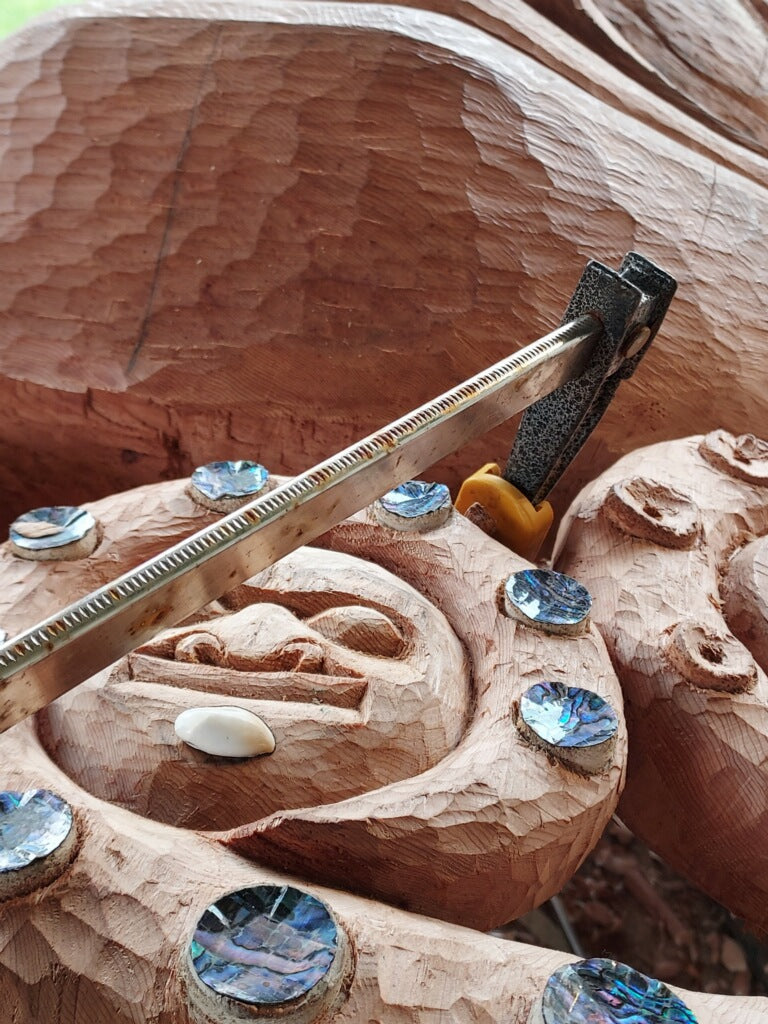
In this story, a Giant Devilfish/Octopus was swamping our canoes and claiming the lives of men, women, and children. The Spirit faces represent the lives that were claimed by the Giant Devilfish/Octopus. The Tlingit word Devilfish/Octopus is Na’akw. Now that my mask has become a representation of a historical event in my clan's history. I wanted to do my best on this piece.
The Tentacles:
To me, there were several different ways I could carve these tentacles. First, I could carve and shape the tentacles, leaving it pretty much smooth, then use a hole saw to create the suckers. The hole saw has the drill bit in the center, which leaves a hole in the center of the sucker, and the overall look is an implied one, all on a flat surface or same plane.
Second, I could do the above method, but make the suckers pop out by carving the wood along the tentacles down, don’t touch the suckers. This is a lot of work and takes time to make happen. But you end up with the suckers on one plane and the tentacles on another plane, which looks good when you paint the suckers white.
Thirdly, I could do all the above. What you have is all these suckers that are flat on top. To make it look more real you need to carve the top of the sucker’s concave and then paint them white. Each of these steps requires time and is labor intensive. Starting to look better.
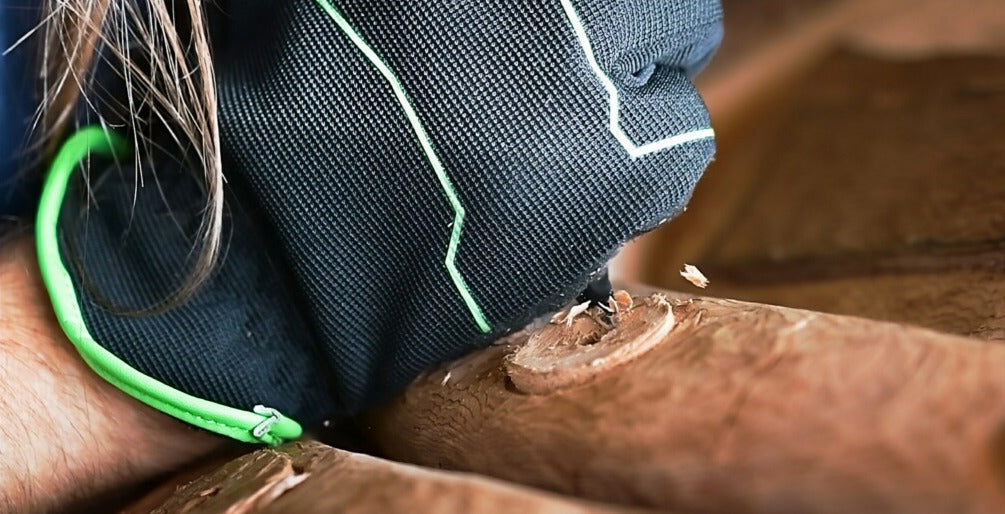
After all, I chose to do all the above and made a couple of adjustments. Instead of painting the suckers white, I inlaid abalone shell to the tops and painted the sides of all of them white. This gives it a totally different look. I also experimented with texturing the tentacles until I had a look like they were in motion. The decision to do this required a lot more time to complete, but the results made the total appearance pop I think. All in all, it was worth it!
And here is the final product:

Now it's time to tell the Kaa-Kooch story!
Before I start the story, I want to mention a couple of important points.
The Tlingit Nation like many Indigenous Tribes is an Oral-speaking tribe, meaning we didn’t have a written language, everything was passed down orally from one generation to the next. My late Uncle Ken Austin, who was an Anthropologist and a First Nation speaker, spoke Tlingit as his first language. He told me he was interviewing an Elder and mentioned to him that he heard a couple of different versions of one of his Clans stories. He asked the Elder who was in his 90s which version was correct. The old timer told him that all the versions were correct since our history was passed down orally from our Grandparents to our Aunties and Uncles.
So, I’m going to tell the version I heard, knowing that there may be other versions amongst the Chookaneidee.
Back in the time when the Tlingit and the Animal people spoke and understood the same language. The Hoonah people would canoe up to their ancestral land Glacier Bay.
There was a Giant Na’akw (devilfish/octopus) that lived in the waters near Glacier Bay. This Devilfish would swamp the canoes and claim the lives of men, women, and children. This was happening often enough to put fear in the Hoonahs.
One day a Chookaneidee man named Kaa-Kooch was sitting near the water talking to his brother-in-law and saying to him with a heavy heart. What am I going to do? The Na’akw has killed all of our Chookaneidee warriors. We have no one left to battle the Na’akw.
The porpoise people were listening. They approached Kaa-Kooch and told him that they could help him rid the waters of this Na’akw if he would make an agreement with them. Kaa-Kooch agreed.
The porpoise people told them that they’ve been battling the Na’akw where it has the advantage and that it has been knocking their spears and daggers out of their hands. He told them that they needed to battle the Na’akw where they had the advantage and that they would sacrifice one of their own and fill the water with blood to draw the Na’akw.
Kaa-Kooch and his brother-in-law found a place and waited until low tide. The porpoise people fill the water with blood which lured the Devilfish towards them.
As the Na’akw was making its way towards them. Kaa-Kooch saw it and started to tie Tlingit daggers to his hands making a growling sound as he did. When the Na’akw got close Kaa-Kooch dove in after it.
The water started bubbling and churning and then came to a flat calm. Kaa-Kooch’s brother-in-law waited for a long while with no sign of the Na’akw or Kaa-Kooch. He went back to the village and reported what had happened.
About a week later a Devilfish was spotted washed up on a beach. The people went to investigate. As they pulled the Na’akw’s tentacles apart, they saw a man that they thought was a T’ooch Kaa- a black man. It turned out to be Kaa-Kooch, apparently during their battle he cut up through the Devilfishes ink sac, getting all covered with ink. Kaa-Kooch was able to kill the Devilfish, but in turn the Devilfish had killed him.
Through this sacrifice of his life and ridding the waters of this danger. The Chookaneidee earned the right to use the Devilfish/Octopus as one of its Clan symbols.
The large Tlingit Devilfish/Octopus mask I carved is my representation of my Chookaneidee Clan story. I feel proud and honored to create it.
It was an honor to be invited by Dr. Worl to present at the Sealaska Heritage Center. Here is a link to the a write up about the event: https://www.sealaskaheritage.org/node/1618
I hope you enjoyed this blog as much as I did writing it.
“Carving Out my Future one chip at a time”
Saat-Kaa
Fred Fulmer Tlingit Artist
